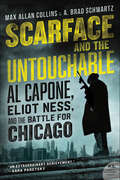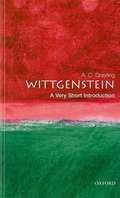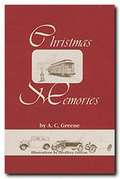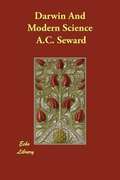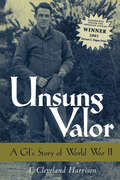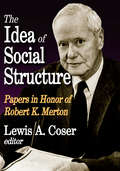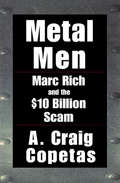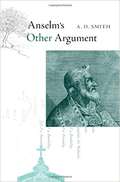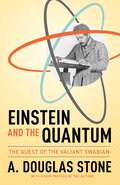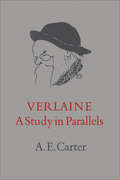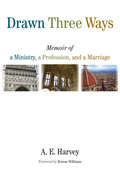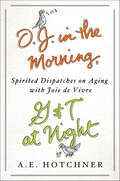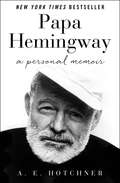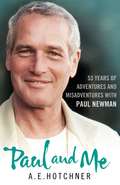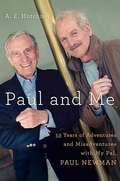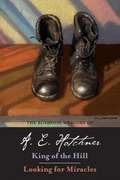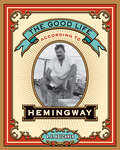- Table View
- List View
Famous Men of the Middle Ages
by John H. Haaren A. B. PolandBiographies of such people as Attila the Hun, William the Conqueror, Marco Polo, Gutenberg, Joan of Arc, and many more
Eliot Ness and the Mad Butcher: Hunting America's Deadliest Unidentified Serial Killer at the Dawn of Modern Criminology
by Max Allan Collins A. Brad Schwartz"The thrilling history of the torso murderer. The tale of the ‘Untouchable’ who got Al Capone but failed to solve his goriest case." —Dan Jones, The Sunday TimesIn the spirit of Devil in the White City comes a true detective tale of the highest standard: the haunting story of Eliot Ness's forgotten final case–his years-long hunt for "The Mad Butcher of Kingsbury Run," a serial killer who terrorized Cleveland through the Great Depression. “After helping to put Al Capone behind bars, lawman Eliot Ness came to Cleveland, where he did battle with a vicious killer. ... Even Ness was stumped trying to apprehend the ‘torso murderer’ responsible for a series of ghoulish killings. ... The authors have done Ness justice." —Wall Street JournalIn 1934, the nation’s most legendary crime-fighter–fresh from taking on the greatest gangster in American history–arrived in Cleveland, a corrupt and dangerous town about to host a world's fair. It was to be his coronation, as well as the city's. Instead, terror descended, as headless bodies started turning up. The young detective, already battling the mob and crooked cops, found his drive to transform American policing subverted by a menace largely unknown to law enforcement: a serial murderer.Eliot Ness's greatest case had begun. Now, Max Allan Collins and A. Brad Schwartz–the acclaimed writing team behind Scarface and the Untouchable–uncover this lost crime epic, delivering a gripping and unforgettable nonfiction account based on decades of groundbreaking research.Ness had risen to fame in 1931 for leading the “Untouchables,” which helped put Chicago’s Al Capone behind bars. As Cleveland's public safety director, in charge of the police and fire departments, Ness offered a radical new vision for better law enforcement. Crime-ridden and devastated by the Depression, Cleveland was preparing for a star-turn itself: in 1936, it would host the "Great Lakes Exposition," which would be visited by seven million people. Late in the summer of 1934, however, pieces of a woman’s body began washing up on the Lake Erie shore–first her ribs, then part of her backbone, then the lower half of her torso. The body count soon grew to five, then ten, then more, all dismembered in gruesome ways.As Ness zeroed in on a suspect–a doctor tied to a prominent political family–powerful forces thwarted his quest for justice. In this battle between a flawed hero and a twisted monster–by turns horror story, political drama, and detective thriller–Collins and Schwartz find an American tragedy, classic in structure, epic in scope.
Scarface and the Untouchable: Al Capone, Eliot Ness, and the Battle for Chicago
by Max Allan Collins A. Brad SchwartzThe new definitive history of gangster-era Chicago–a landmark work that is as riveting as a thriller. Now featuring a new preface, plus 115 photographs and a map of gangland Chicago.A Chicago Public Library Best Book of the Year“Gripping. ... Reads like a novel.” —Chicago“Revolutionizes our understanding of Al Capone and Eliot Ness." —Matthew PearlIn 1929, thirty-year-old gangster Al Capone ruled both Chicago's underworld and its corrupt government. To a public who scorned Prohibition, "Scarface" became a local hero and national celebrity. But after the brutal St. Valentine's Day Massacre transformed Capone into "Public Enemy Number One," the federal government found an unlikely new hero in a twenty-seven-year-old Prohibition agent named Eliot Ness. Chosen to head the legendary law enforcement team known as "The Untouchables," Ness set his sights on crippling Capone's criminal empire.Today, no underworld figure is more iconic than Al Capone and no lawman as renowned as Eliot Ness. Yet in 2016 the Chicago Tribune wrote, "Al Capone still awaits the biographer who can fully untangle, and balance, the complexities of his life," while revisionist historians have continued to misrepresent Ness and his remarkable career.Enter Max Allan Collins and A. Brad Schwartz, a unique and vibrant writing team combining the narrative skill of a master novelist with the scholarly rigor of a trained historian. Collins is the New York Times bestselling author of the gangster classic Road to Perdition. Schwartz is a rising-star historian whose work anticipated the fake-news phenomenon.Scarface and the Untouchable draws upon decades of primary source research—including the personal papers of Ness and his associates, newly released federal files, and long-forgotten crime magazines containing interviews with the gangsters and G-men themselves. Collins and Schwartz have recaptured a bygone bullet-ridden era while uncovering the previously unrevealed truth behind Scarface's downfall. Together they have crafted the definitive work on Capone, Ness, and the battle for Chicago.
Russell: A Very Short Introduction
by A. C. GraylingBertrand Russell (1872-1970) is one of the most famous and important philosophers of the twentieth century. In this account of his life and work A.C. Grayling introduces both his technical contributions to logic and philosophy, and his wide-ranging views on education, politics, war, and sexual morality. Russell is credited with being one of the prime movers of Analytic Philosophy, and with having played a part in the revolution in social attitudes witnessed throughout the twentieth-century world. This introduction gives a clear survey of Russell's achievements across their wholerange.
Wittgenstein: A Very Short Introduction
by A. C. GraylingLudwig Wittgenstein (1889-1951) was an extraordinarily original philosopher, whose influence on twentieth-century thinking goes well beyond philosophy itself. In this book, which aims to make Wittgenstein's thought accessible to the general non-specialist reader, A. C. Grayling explains the nature and impact of Wittgenstein's views. He describes both his early and later philosophy, the differences and connections between them, and gives a fresh assessment of Wittgenstein's continuing influence on contemporary thought.
Christmas Memories
by A. C. GreeneOne of Texas's most recognized folk lore writers presents this little book with two of his fondest Christmas reminiscences from a childhood during the Depression. "In the town where I was born and raised, everyone drove a few miles south to cut a tree.... In that dry, windy country few of the cedars grew straight and full, so the major problem was to find the one least lopsided and wind-whipped." Thus A. C. Greene, in "The Too-Big Christmas Tree," tells of a Christmas in the 1920s when his father cut a too-big tree and almost broke up the family. Long out-of-print and a collector's item, this story is now coupled with "Christmas Shopping," in which a small boy sets out with his grandmother on his first shopping trip to buy Christmas presents for the family. "My grandmother and I boarded the little four-wheel trolley on the Fair Park loop--the men who were waiting all tipping their hats and letting the women and children on first. Pretty soon we were bumping and swaying up Sayles Hill on our way to downtown." A.C. Greene, born in Abilene, Texas, wrote a column for the Dallas Morning News and more than twenty books, many on Texas history and lore. He was a memoirist, fiction writer, historian, poet, and book critic.
Darwin and Modern Science
by A. C. SewardThe Cambridge Philosophical Society collected this series of essays in commemoration of the centenary of the birth of Charles Darwin and the 50th anniversary of the publication of The Origin of Species. Aiming to be accessible to the 'educated layman', the eminent contributors reviewed the impact of Darwin's ideas in many spheres. They addressed contemporary (1909) attitudes, Darwin's theories and their far-reaching implications, and the progress of new lines of research that had emerged from them. The diversity of views among biologists regarding both the origin of species and the best directions for further research is clearly evident. In his work, Darwin had sought only the truth, writing 'Absolute accuracy is the hardest merit to attain, and the highest merit. Any deviation is ruin.' However dramatic the controversies he stirred, what shines from these essays is profound admiration for both Darwin's intellect and the quality of his character.
Unsung Valor: A GI's Story of World War II
by A. Cleveland HarrisonWinner of the 2001 Forrest C. Pogue Prize from the Eisenhower Center for American StudiesWhen drafted into the army in 1943, A. Cleveland Harrison was a reluctant eighteen-year-old Arkansas student sure that he would not make a good soldier. But inside thirty months he manfully bore arms and more. This book is his memoir about becoming a soldier, a common infantryman among the ranks of those who truly won the war. After the Allied victory in 1945, books by and about the major statesmen, generals, and heroes of World War II appeared regularly. Yet millions of American soldiers who helped achieve and secure victory slipped silently into civilian life, trying to forget the war and what they had done. Most remain unsung, for virtually none thought of themselves as exceptional. During the war ordinary soldiers had only done what they believed their country expected. Harrison's firsthand account is the full history of what happened to him in three units from 1943 to 1946, disclosing the sensibilities, the conflicting emotions, and the humor that coalesced within the naive draftee. He details the induction and basic training procedures, his student experiences in Army pre-engineering school, his infantry training and overseas combat, battle wounds and the complete medical pipeline of hospitalization and recovery, the waits in replacement depots, life in the Army of Occupation, and his discharge. Wrenched from college and denied the Army Specialized Training Program's promise of individual choice in assignment, students were thrust into the infantry. Harrison's memoir describes training in the Ninety-fourth Infantry Division in the U.S., their first combat holding action at Lorient, France, and the division's race to join Patton's Third Army, where Harrison's company was decimated, and he was wounded while attacking the Siegfried Line. Reassigned to the U.S. Group Control Council, he had a unique opportunity to observe both the highest echelons in military government and the ordinary soldiers as Allied troops occupied Berlin. This veteran's memoir reveals all aspects of military life and sings of those valorous but ordinary soldiers who achieved the victory.
The Idea of Social Structure: Papers in Honor of Robert K. Merton
by A. Coser LewisWritten and compiled by friends and former students, The Idea of Social Structure honors Robert K. Merton, considered one of the premier sociologists of the twentieth century. Along with Talcott Parsons and Marion J. Levy, Merton was emphatic in his use of the term "social structure"—however different they were in defining and refining the term. The chapters in this volume address many of Merton's diverse sociological theories and, in turn, his theories' impact upon a very large sociological territory.The volume includes major statements on the context of working with Merton by Lewis A. Coser, Paul F. Lazarsfeld, Robert A. Nisbet, and Seymour Martin Lipset, as well as memorable statements covering Merton's interests in the sociology of knowledge and science, planning communities, medical education, relative deprivation, everyday life, political roles, and communication media. This is a powerful sourcebook for understanding the work of Merton and of his intellectual successors.Nisbet called the decade of the 1930s among the most vital and creative periods in American history. It was certainly a period of intense struggle—political, military, and ideological. But the formation of modern sociology was without question one of the crowning achievements in the scientific evolution of the century. The volume is sharply focused on Merton's work and deeply appreciative of the nature of his contribution. It is a landmark effort in the study of sociology as history.
Metal Men: Marc Rich and the $10 Billion Scam
by A. Craig CopetasThis true story of the multibillionaire who fled to Switzerland &“reads like a mystery novel&” (USA Today). How did Marc Rich make over ten billion dollars while paying hardly any taxes? Journalist A. Craig Copetas infiltrated the inner circle of the commodities market and Rich&’s associates to show not only how the metals and minerals trader pulled off the scam, becoming one of America&’s most wanted criminals, but also how other traders have used the same model to evade taxes as well. A continuing figure of controversy even after his death, Rich, a hedge fund manager and the founder of Glencore, was wanted for evading almost ninety million dollars in taxes and if caught, could have spent life in prison. From a former staff reporter at The Wall Street Journal, Metal Men is a story of international intrigue spanning the globe, from the inside of the White House to the Kremlin, a brilliantly researched work that exposes the inner workings of one of country&’s largest scams. &“Mr. Copetas is at his best evoking the high-stakes, fast-paced life of the commodities traders: the greed and corruption that consume them are the stuff of high drama.&” —The New York Times Book Review
Anselm's Other Argument
by A. D. SmithAnselm of Canterbury (1033-1109 CE), in his work Proslogion, originated the "ontological argument" for God's existence, famously arguing that "something than which nothing greater can be conceived," which he identifies with God, must actually exist, for otherwise something greater could indeed be conceived. Some commentators have claimed that although Anselm may not have been conscious of the fact, the Proslogion as well as his Reply to Gaunilo contains passages that constitute a second independent proof: a "modal ontological argument" that concerns the supposed logical necessity of God's existence. Other commentators disagree, countering that the alleged second argument does not stand on its own but presupposes the conclusion of the first. Anselm's Other Argument stakes an original claim in this debate, and takes it further. There is a second a priori argument in Anselm (specifically in the Reply), A. D. Smith contends, but it is not the modal argument past scholars have identified. This second argument surfaces in a number of forms, though always turning on certain deep, interrelated metaphysical issues. It is this form of argument that in fact underlies several of the passages which have been misconstrued as statements of the modal argument. In a book that combines historical research with rigorous philosophical analysis, Smith discusses this argument in detail, finally defending a modification of it that is implicit in Anselm. This "other argument" bears a striking resemblance to one that Duns Scotus would later employ.
Einstein and the Quantum: The Quest of the Valiant Swabian
by A. Douglas StoneThe untold story of Albert Einstein's role as the father of quantum theoryEinstein and the Quantum reveals for the first time the full significance of Albert Einstein's contributions to quantum theory. Einstein famously rejected quantum mechanics, observing that God does not play dice. But, in fact, he thought more about the nature of atoms, molecules, and the emission and absorption of light—the core of what we now know as quantum theory—than he did about relativity.A compelling blend of physics, biography, and the history of science, Einstein and the Quantum shares the untold story of how Einstein—not Max Planck or Niels Bohr—was the driving force behind early quantum theory. It paints a vivid portrait of the iconic physicist as he grappled with the apparently contradictory nature of the atomic world, in which its invisible constituents defy the categories of classical physics, behaving simultaneously as both particle and wave. And it demonstrates how Einstein's later work on the emission and absorption of light, and on atomic gases, led directly to Erwin Schrödinger's breakthrough to the modern form of quantum mechanics. The book sheds light on why Einstein ultimately renounced his own brilliant work on quantum theory, due to his deep belief in science as something objective and eternal.
Verlaine: A Study in Parallels
by A. E. CarterThe contradictions of Verlaine's nature are mirrored in his verse, which is alternately mystic, sensuous, exquisite and prosaic. He had extraordinary lyric powers; he was a master of eerie harmonies such as few other poets have achieved, and, in Sagesse, he produced religious verse which challenges comparison with the very best of its kind. Yet here and there can be found a curious weakening in the texture of thought and inspiration: he turns and twists, takes flight, seeks reassurance in platitude and convention – marriage, dogmatic theology, reactionary political creeds. He is even capable of lamenting (as Rimbaud shows him in Une Saison en Enfer) the emotional and poetic experiments which give his work its supreme value. It is almost as though he were afraid of his own talent. The explanation, as far as there is one, lies in a combination of personality and circumstance. This biography attempts to explore the "parallels" (Verlaine's own term) between his life and his poetry. Nearly everything he produced, whether good or bad, was a reflection of some crisis of thought or feeling. No one demonstrates better than Verlaine the antinomies between the artist and his work, between the man and the genius; and in every case we are obliged to admit that the one explains the other. Without the weakness and the squalor we might indeed have had a rational human being and a good husband for Mathilde Mauté, but we should have had no poet, or no poet like Paul Verlaine. Professor Carter concentrates on the combination of Verlaine's personality and experiences that produced some of the most brilliant poetry in the French language. The result is one of the best critical biographies of Verlaine published to date.
Drawn Three Ways: Memoir of a Ministry, a Profession, and a Marriage
by Rowan Williams A. E. HarveyMoving reflections from an influential Anglican pastor, theologian, and teacher In this compelling memoir Anthony Harvey traces the three ways he has felt drawn throughout his life — to a ministry in the Anglican priesthood, to a profession in theological scholarship, and to his marriage and family. Harvey recounts his training of clergy in Canterbury, his time as canon of Westminster Abbey, his teaching and research at the University of Oxford, and his many exciting travels. He also candidly discusses the challenges presented by his marriage to an artist and writer whose spells of mental illness, along with the premature death of their daughter, placed great strain on both his family life and his public responsibilities. Throughout the book Harvey authentically narrates his inner tensions and conflicts, his own spiritual questioning, and his propensity toward a Christian stoicism.
Drawn Three Ways: Memoir of a Ministry, a Profession, and a Marriage
by A. E. HarveyMoving reflections from an influential Anglican pastor, theologian, and teacher In this compelling memoir Anthony Harvey traces the three ways he has felt drawn throughout his life — to a ministry in the Anglican priesthood, to a profession in theological scholarship, and to his marriage and family. Harvey recounts his training of clergy in Canterbury, his time as canon of Westminster Abbey, his teaching and research at the University of Oxford, and his many exciting travels. He also candidly discusses the challenges presented by his marriage to an artist and writer whose spells of mental illness, along with the premature death of their daughter, placed great strain on both his family life and his public responsibilities. Throughout the book Harvey authentically narrates his inner tensions and conflicts, his own spiritual questioning, and his propensity toward a Christian stoicism.
Hemingway in Love: His Own Story
by A. E. HotchnerHemingway's deeply reflective account of his destructive Paris affair and how it affected the legendary life he rebuilt after, as told to his best friend, the writer A.E. Hotchner.In June of 1961, A. E. Hotchner visited a close friend in the psychiatric ward of St. Mary's Hospital. It would be the last time they spoke - three weeks later, Ernest Hemingway returned home, where he took his own life. Their final conversation was also the final installment in a saga that Hemingway had unraveled for Hotchner over years of world travel.Ernest always kept a few of his special experiences off the page, storing them as insurance against a dry-up of ideas. But after a near miss with death, he entrusted his most meaningful tale to Hotchner, so that if he never got to write it himself, then at least someone would know. In characteristically pragmatic terms, Hemingway divulged the details of the affair that destroyed his first marriage: the truth of his romantic life in Paris and how he gambled and lost Hadley, the great love he'd spend the rest of his life seeking.But the search was not without its notable moments, and he told of those, too: of impotence cured in a house of God; of back-to-back plane crashes in the African bush, one of which nearly killed him, while he emerged from the other brandishing a bottle of gin and a bunch of bananas; of cocktails and commiseration with F. Scott Fitzgerald and Josephine Baker; of adventure, human error, and life after lost love. This is Hemingway as few have known him - humble, thoughtful, and full of regret.To protect the feelings of Ernest's wife, Mary, who was also a close friend, Hotch kept these conversations to himself for decades. Now he tells the story as Hemingway told it to him. Hemingway in Love puts you in the room with the master and invites you to listen as he relives the drama of those young, definitive years that set the course for the rest of his life and dogged him to the end of his days.
O. J. in the Morning, G&T at Night: Spirited Dispatches on Aging with Joie de Vivre
by A. E. Hotchner"Acclaimed author and feisty nonagenarian Hotchner's witty ruminations about the art of living well into old age...with brio and a touch of his trademark sass, Hotchner writes about rediscovering love after 75, finding joy in a scrappy African gray parrot he named after his longtime friend, Ernest Hemingway, and going on his very first safari at age 88." - Kirkus ReviewsWhen youngsters in their seventies and eighties, nervously lurching toward the horizon of ninety, ask me, "What's the secret?" That's what I tell them: "O.J. in the morning, gin and tonic at night."You don't have to be in your seventies or eighties to enjoy A. E. Hotchner's elixir for aging happily, but after reading this charming collection of essays, you may wish you were. Nonagenarian, novelist, playwright, and biographer, Hotchner gives us heartfelt and laugh-out-loud anecdotes that describe his unique reflections on the aging process. His musings cover everything from the outlandish commercials that target the older generation (Viagra, Cialis, and Flomax) to suggestions on adapting the tennis game for seniors (he suggests lowering the net by two inches and moving all outer lines two feet inward) to the advantages of having a pet (his pet parrot often tells guests to "kiss my ass").He can equally capture the headier side of aging, which is bittersweetly revealed in his piece about divorce. With his disarming, eloquent voice and dry sense of humor, Hotch illuminates life's wisdoms through his optimistic, witty, and romantic outlook, all the while making you feel, well, not unhappy about growing older.O.J. in the Morning, G&T at Night is a book of courageous advice, humorous wisdom, and, above all, good strategies for how to stay young at heart.
Papa Hemingway: A Personal Memoir
by A. E. HotchnerAn intimate, joy-filled portrait and New York Times bestseller, written by one of Hemingway’s closest friends: “It is hard to imagine a better biography” (Life). In 1948, A. E. Hotchner went to Cuba to ask Ernest Hemingway to write an article on “The Future of Literature” for Cosmopolitan magazine. The article never materialized, but from that first meeting at the El Floridita bar in Havana until Hemingway’s death in 1961, Hotchner and the Nobel and Pulitzer Prize–winning author developed a deep and abiding friendship. They caroused in New York City and Rome, ran with the bulls in Pamplona, hunted in Idaho, and fished the waters off Cuba. Every time they got together, Hemingway held forth on an astonishing variety of subjects, from the art of the perfect daiquiri to Paris in the 1920s to his boyhood in Oak Park, Illinois. Thankfully, Hotchner took it all down. Papa Hemingway provides fascinating details about Hemingway’s daily routine, including the German army belt he wore and his habit of writing descriptive passages in longhand and dialogue on a typewriter, and documents his memories of Gertrude Stein, F. Scott Fitzgerald, Martha Gellhorn, Marlene Dietrich, and many of the twentieth century’s most notable artists and celebrities. In the literary icon’s final years, as his poor health began to affect his work, Hotchner tenderly and honestly portrays Hemingway’s valiant attempts to beat back the depression that would lead him to take his own life. Deeply compassionate and highly entertaining, this “remarkable” New York Times bestseller “makes Hemingway live for us as nothing else has done” (The Wall Street Journal).
Paul and Me
by A. E. HotchnerA. E. Hotchner first met Paul Newman in 1956, when the relatively unknown actor assumed the role James Dean was to play in Hotchner's first television play, based on an Ernest Hemingway story. The project elevated both men from relative obscurity to stardom, and commenced a close and trusted friendship that lasted until Newman's death in 2008. In A Friendship, Hotchner presents a complicated, unpredictable and talented man and leads the reader through their shared adventures. The pair travelled extensively around the globe, and owned fishing boats that involved them in embarrassing incidents. They successfully defended themselves before a jury in a ludicrous two-year trial, and triumphed in a beery tennis match against Robert Redford and Jack Valenti. Most notably, they started a food company, Newman's Own, as a prank and watched it soar into a major enterprise that has given all its 200 million dollars of profits to charities. Hotchner's knowledge of Newman is unparalleled, and as a gifted storyteller he brings to the reader crucial insights Newman revealed about himself. A Friendship is the story of an unusual friendship and a tribute to the beloved actor who gave to the world as much as the world gave him.
Paul and Me: Fifty-three Years of Adventures and Misadventures with My Pal Paul Newman
by A. E. HotchnerBestselling author A. E. Hotchner's intimate account of his 53-year friendship with his pal Paul Newman. A. E. Hotchner first met Paul Newman in 1955 when the virtually unknown actor assumed the lead role in Hotchner's first television play, based on an Ernest Hemingway story. The project elevated both men from relative obscurity to recognition and began a close and trusted friendship that lasted until Newman's death in 2008. In Paul and Me, Hotchner depicts a complicated, unpredictable, fun-loving, talented man, and takes the reader along on their adventures. The pair traveled extensively, skippered a succession of bizarre boats, confounded the business world, scored triumphs on the stage, and sustained their friendship through good times and bad. Most notably, they started Newman's Own as a prank and watched it morph into a major enterprise that so far has donated all its $300 million in profit to charities including the Hole in the Wall Camps worldwide, dedicated to helping thousands of children with life-threatening illnesses. Paul and Me, complete with personal photographs, is the story of a freewheeling friendship and a tribute to the acclaimed actor who gave to the world as much as the world gave him.From the Hardcover edition.
Sophia: Living and Loving
by A. E. HotchnerBiography of the famous actress Sophia Loren up to 1979.
The Boyhood Memoirs of A. E. Hotchner: King of the Hill and Looking for Miracles
by A. E. Hotchner<p><i>King of the Hill</i> is A. E. Hotchner's memoir of his impoverished childhood in St. Louis, originally published in 1972. Hotchner's story is one of ingenuity and spirit in the face of economic hardship during the Great Depression. Left to live alone in a rundown hotel while his traveling salesman father is on the road, his mother is hospitalized, and his younger brother is sent to live with relatives, young Hotchner's determination to survive overcomes the challenge of keeping his situation secret. <p><i>Looking for Miracles</i> is a sequel to <i>King of the Hill</i>, originally published in 1975. The story takes place in 1936, three years after <i>King of the Hill</i>, when Hotchner bluffs his way into a job as a summer counselor at a camp in the Ozarks. The story is poignant and uplifting, as well as hilariously entertaining. <p>Bound together for the first time, these two boyhood memoirs of Hotchner's will touch readers with their truth, innocence, and joy. Hotchner's ability to convey times of intense hardship in warm and witty language attests to his stature as one of America's great storytellers.</p>
The Good Life According to Hemingway
by A. E. Hotchner“Scholars and [fans] will delight . . . provide[s] a window into the multifaceted mind of a literary giant. A tasty bonus is roughly 150 mostly rare pix.” —Library JournalIn the fourteen years that A. E. Hotchner traveled with Ernest Hemingway, he collected a lifetime's worth of Hemingway's experiences, anecdotes, and observations on the backs of matchbooks, napkins, and slips of paper. Speaking on everything from war to women to writing, Hemingway's words are at turns funny and poignant, revealing a rich portrait of the American literary giant and the world he took by storm.Complete with black-and-white photographs that cover nearly two decades of Hemingway's life, The Good Life According to Hemingway is an exuberant celebration of his remarkable genius and the chaotic adventure of his life.“[E]ntertaining.” —Publishers Weekly


